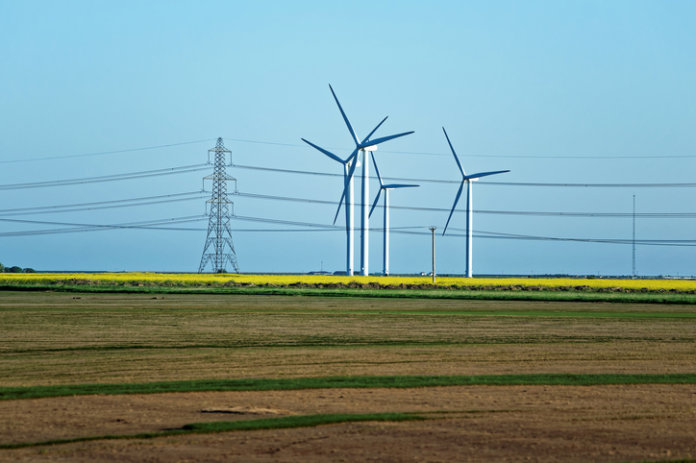Big companies are increasingly signing deals to buy wind and solar power, and their large and growing demand may exceed the capacity of existing and planned transmission lines; however, a new report from the Wind Energy Foundation (WEF), a renewable energy advocacy group, warns that transmission planners aren’t taking this into account as they draw up their future plans.
Large U.S. businesses – including Fortune 500 companies – are increasingly acting on their publicly announced renewable energy goals, as new utility-scale wind and solar energy projects are now often the lowest-cost power available. According to the WEF report, a coalition of more than 100 corporate entities set a goal of purchasing 60 GW of renewable energy by the year 2025, equivalent to the amount of energy produced by 110 conventional power plants and enough electricity to power nearly 50 million homes.
The report, which estimates that the coalition still has some 51 GW left to purchase in order to meet that goal, questions whether current transmission plans can accommodate the increase in demand.
“This report demonstrates that there is an immediate need for transmission planners to account for the significant renewable energy goals of corporate purchasers,” says John Kostyack, executive director of WEF. “As costs continue to decline for new utility-scale wind and solar projects, an ever-increasing number of large corporate buyers are acting to lock in low-cost renewable power purchase agreements.”
WEF says its report looked at a range of different scenarios and found that existing and planned transmission facilities may not be sufficient to deliver the amount of renewable energy companies have already committed to buying. For example, using a conservative set of transmission-building assumptions, the report found that planned transmission build-outs would meet only 42% of corporate renewable energy demand in a high-procurement scenario, or 78% of the demand in a low-procurement scenario.
“GM’s ability to access renewable energy is key to our decisions about where to expand new facilities,” comments Rob Threlkeld, global manager of renewable energy at General Motors. “It’s essential that transmission planners take the growing corporate demand for renewables into account in the planning process. Expanding and upgrading transmission is critical in helping GM access low-cost renewable energy and meet our commitments.”
Given these findings, the report recommends that corporate buyers and other large institutional customers take the following actions:
- Encourage transmission planners and state Public Service Commissions to increase access to affordable, renewable energy by approving upgrades and expansion to transmission lines;
- Participate in regional and inter-regional transmission planning conversations to ensure future transmission infrastructure meets customer demand for renewable energy; and
- Urge the Federal Energy Regulatory Commission (FERC) to continue to work to improve the inter-regional planning process, consistent with FERC Order 1000.
“Any company aiming to buy renewable energy should engage in the transmission planning process,” says David Gardiner, president of David Gardiner and Associates, which produced the report on behalf of WEF. “Access to the lowest-cost renewable resources depends on transmission, and corporate renewable energy buyers need to communicate their procurement goals to transmission planners.”
The full report is available here.




